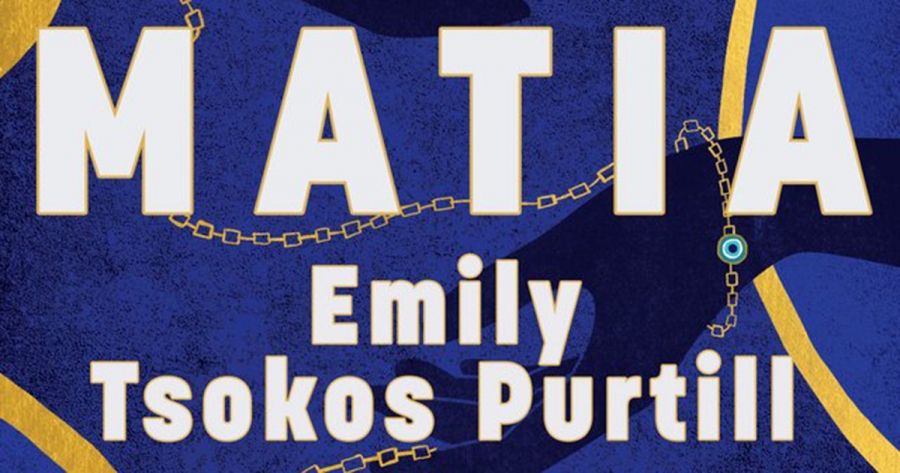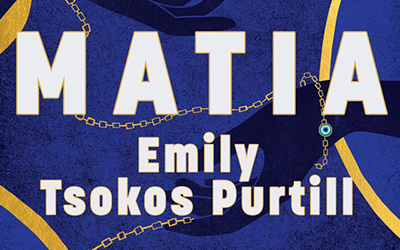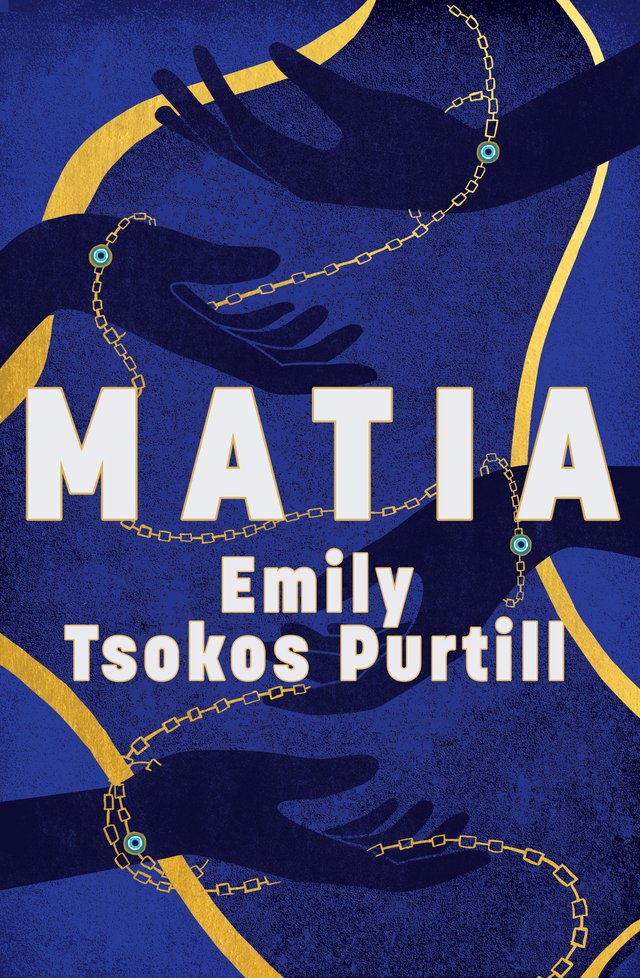
- Free Article: No
- Contents Category: Fiction
- Review Article: Yes
- Article Title: Four women, one bracelet
- Article Subtitle: When individualism meets superstition
- Online Only: No
- Custom Highlight Text:
Emily Tsokos Purtill’s first novel, Matia, is both ambitiously expansive and, narrated as a series of moments in time, deftly miniaturised. Spanning four individual decades from 1940 to 2070, and moving between continents, it details the lives of four generations of Greek-Australian mothers and daughters. Unlike a conventional family saga, the novel has the associative structure of memory, moving through time and space in unpredictable ways, creating both threads of continuity and a sense of fragmentation. The narrative focus on women charts the struggle for agency through the eyes of the four women, each of them bequeathed a bracelet – the Greek word matia of the book’s title – intended to ward off the evil eye. As such, the modern concept of individualism collides with the realms of prophecy and superstition, producing a fascinating exploration of the crucial issues of female agency and choice.
- Featured Image (400px * 250px):

- Alt Tag (Featured Image): Susan Midalia reviews ‘Matia’ by Emily Tsokos Purtill
- Book 1 Title: Matia
- Book 1 Biblio: UWA Publishing, $34.99 pb, 265 pp
- Book 1 Cover Small (400 x 600):

- Book 1 Cover (800 x 1200):

- Book 1 Readings Link: https://www.readings.com.au/product/9781760802905/matia--emily-tsokos-purtill--2024--9781760802905#rac:jokjjzr6ly9m
Not that the novel offers a straightforward account of social progress for women. For one thing, it shows that even in the most circumscribed historical contexts there is always the possibility of autonomy. This is evident in the story of first-generation Greek migrant Anatasia; arriving in Perth after the war, Sia is both the unhappy victim of an arranged marriage and courageously, if secretly, defiant of her culture’s rigid sexual morality. By contrast, her Australian-born daughter Koula is permitted by her parents to marry for love. Given her work-obsessed husband’s frequent absences, she chooses to settle for economic security instead of emotional fulfilment. Feistily outspoken, she is also bound by conventional ideas of marriage and domesticity. Her daughter Athena also makes a love match, this time against her mother’s wishes, but Athena’s acceptance of an open marriage leaves her feeling deeply resentful and profoundly alone. The most radical domestic narrative belongs to the fourth-generation daughter Clara, who in the context of widespread environmental destruction, rejects marriage and motherhood altogether. Here, too, the consequences of a woman’s choice are politically ambiguous, presented as both ethically laudable and as a resignation to the inevitable demise of the planet.
Such complexity also underpins the novel’s use of its central motif of food, which signifies traditional culture and identity, subversion and deprivation. Mouth-watering descriptions of traditional Greek dishes feature in the stories of the two older generations of women. Matia is satisfyingly rich in the taste, smells, and textures of both the savoury and the sweet. Third-generation Athena’s rejection of Greek cooking is seen in the comic set-piece of a family lunch, in which her mother Koula is both uncomprehending and enraged. Further generational change is represented by Athena and her daughter, who, like many middle-class New Yorkers, prefer takeaway to home-cooked meals. The manufacture and consumption of yoghurt features heavily, and often amusingly, as both the source of the older generations’ wealth and the younger generations’ indifference to economic success. There is nothing funny, however, about the scene in which the matriarch Sia is reduced to eating unappetising food in an aged care home, her physical dislocation a further sign of the breakdown of the traditional model of the family.
The novel is also an engaging blend of theatrical family dramas and moments of reflection, made all the more affecting by a subtle use of the unsaid. One memorable passage among many hints at the sexual brutality of Sia’s husband. Another is a beautifully understated deathbed scene; sitting by her mother’s side, Koula realises that her daughter will take neither the time nor the trouble to hold her hand at the point of dying. Her silence evokes the pathos of a lost opportunity for a more honest communication between the generations.
The unsaid also pertains to a long-held family secret and how the experience of female solidarity might help to overcome the indignity of a hidden source of shame. The novel’s gradual revelation of an anguished past is counterpointed by its more affirming movement into a speculative future. When the deliberately childless Clara travels to meet an unknown relative in the land of her great-great grandmother Sia, the novel leaves us with a deeply moving sense of return and connection, symbolised by an attachment to place and the value of art in the context of a fractured world. But these positive notes are troubled by a melancholy awareness of loneliness and loss, echoed in the novel’s extensive use of allusions to T.S. Eliot’s seminal poem ‘The Love Song of J. Alfred Prufrock’. Characters in the novel die young; youthful ideals are shattered; fathers favour sons or abandon their children altogether. The polyphonic form of the novel, employing the different perspectives and voices of the four women, enacts the modernist focus on the isolated consciousness, with its attendant anxieties, misunderstandings, and unspoken longings and regrets.
What also informs this accomplished and absorbing début is a concern with different forms of knowledge. While the older generations continue to believe in the determinative power of prophecy and superstition, Athena and Clara put their faith in self-analysis and professional psychiatry to gain control of their lives. In both cases, the novel’s rendering of the characters’ outer worlds is meticulously researched, while its depiction of their inner worlds is imbued with compassion. For all its formal experimentation, then, Matia retains the traditional belief in the power of the empathetic imagination to understand the entanglements of cultural and generational differences.
Emily Tsokos Purtill’s work of creative non-fiction ‘Know Thyself’ will be published in the Griffith Review in 2025. Given the intelligence and skilful crafting of her first novel, I look forward to reading both the essay and any future ventures in the longer narrative form.


Comments powered by CComment